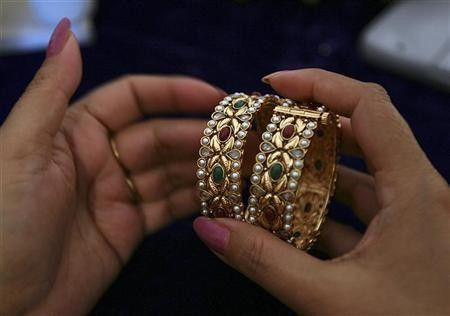British Luxury Jewellers Expand into China

(REUTERS) -- Britain's luxury jewellers are opening outlets in China, where demand for jewellery is set to grow while appetite wanes in western markets.
Royal jeweller Garrard became the latest in a string of British brands to open an outlet in the Lane Crawford department store in Hong Kong last month, where brands usually test the waters for Chinese demand.
The British Jewellers' Association (BJA) held a showcase in Beijing also last month organised by designer Fei Liu and attended by Chinese actress Liu Shishi.
The endgame is China, Boodles Managing Director Michael Wainwright told Reuters. The upmarket British jeweller, founded in 1798, opened an outlet in Lane Crawford in August and plans to expand into the mainland along with an expansion of the department store.
What appeals to us is what appeals to everyone else about the place -- their appetite for luxury goods and their existing wealth and their likely wealth in the coming five, 10 years, Wainwright said.
The newcomers stand to benefit from British culture and design as they seek to tap a market that is growing rapidly and is already the world's second-largest market for gold and the biggest for platinum jewellery.
I think there is a sense of coolness with British jewellery, something distinctive about their designs, which makes it different from other European brands, said Angelica Cheung, editor-in-chief of Vogue China.
Demand for gold jewellery in China rose 13 percent year-on-year in the third quarter, and platinum demand is expected to increase by 2 percent by the end of the year. By contrast, UK and U.S. jewellery consumption fell by 14 percent and Italy's by 16 percent in 2010.
Tiffany's annual report showed an increase in sales of 29 percent in Asia-Pacific in 2010 versus 12 percent in the Americas.
BRANDS WITH STORY TO TELL
Stephen Webster, a British jeweller with outlets in Spain, Russia and the United States, opened in Lane Crawford in 2010. China is certainly in our sights, founder Stephen Webster said in an email.
Theo Fennell first opened in Lane Crawford in 2005, and its chairman and chief executive of the same name said earlier this year the brand wanted to establish itself on the mainland.
The Chinese are keen to invest in precious metals and very interested in luxury products produced by up-and-coming UK designer brands, said Lindsey Straughton of the BJA.
But Jolene Chao, a 23-year-old financial recruitment consultant at Michael Page in Beijing, said: UK brands have only a few high-end stores in China. Therefore they are yet to be nationally acknowledged and admired.
Vogue's Cheung said British jewellers need to position themselves carefully and highlight what makes their brands different.
They face local competitors such as Chow Tai Fook and established foreign players such as Tiffany and Cartier . Cartier opened its first boutique in 1997 and now boasts 36 across China.
The market is growing so rapidly, however, that newcomers do not need to take market share from established brands to succeed, said Fflur Roberts, global head of luxury at Euromonitor.
[Chinese consumers] do like brands that have a story behind them. There has to be a lot about the heritage of that brand within the advertising, Roberts said, citing the success of British clothes brand Burberry in China.
The warrants given to British companies that are official suppliers of the royal family are a wonderful marketing route to take, she said.
One Hong Kong banker said an exhibition about British jewellery through the ages proved popular in Shanghai a few years ago and that it might be a good idea to start marketing the history and royalty of most British brands in China.
After all, everyone would like to have something made from the queen's factory, she said.
© Copyright Thomson Reuters 2024. All rights reserved.






















